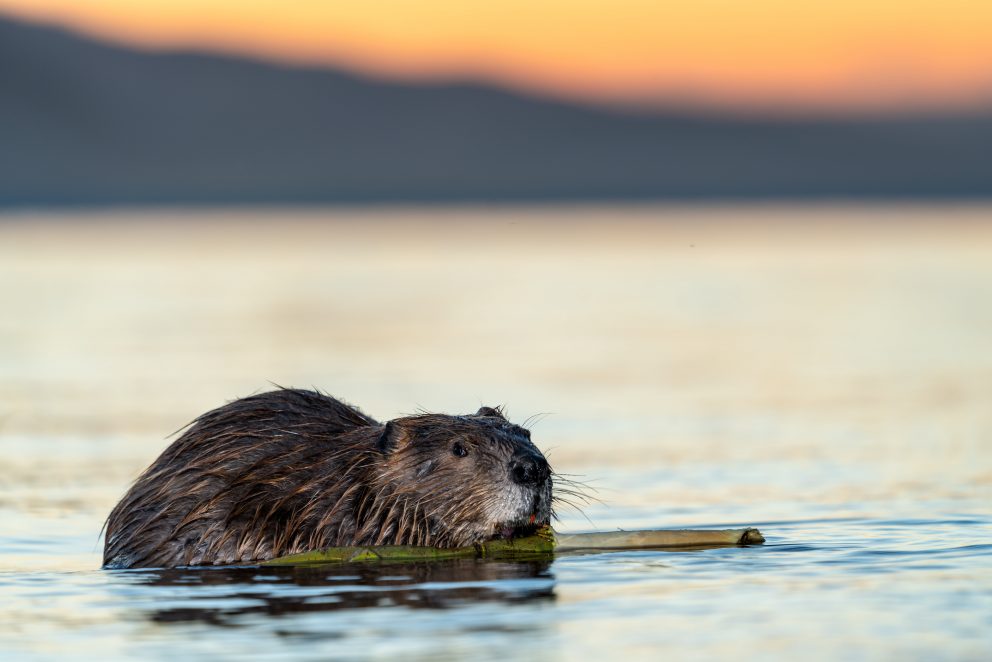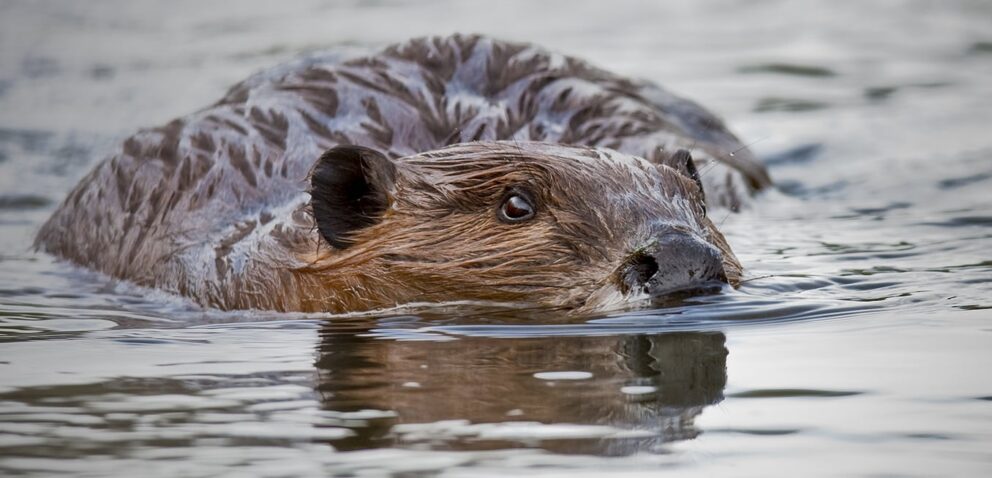- SCIENTIFIC NAME
- Castor canadensis
- CLASSIFICATION
- Mammal
- LIFE SPAN
- 5-10 Years
- SIZE
- 36-48” | 40-70lbs
- STATE CONSERVATION STATUS
-
- State Protected
- FEDERAL CONSERVATION STATUS
- Not Evaluated
- GAME STATUS
- Furbearer
- GAME TYPE
- Furbearer
- Washoe
- Humboldt
- Pershing
- Churchill
- Mineral
- Lyon
- Douglas
- Carson City
- Storey
- Elko
- Lander
- Eureka
- White Pine
- Esmeralda
- Nye
- Lincoln
- Clark
Habitat & Range
The North American Beaver prefers habitat with adequate water and rich vegetation to forage for food and fell trees. They can be found in the streams and tributaries of the Snake River, the Humboldt River basin, and along the Colorado River.
- Lakes and reservoirs
- Marsh
- Rivers and streams
Threats
- Habitat Degradation
- Habitat Loss
Natural History
The North American Beaver is a herbivore that eats a variety of aquatic plants and the inner bark of trees. Their specialized teeth allow them to cut down the vegetation to eat and fell trees to build dams and lodges. These dams can change the landscape of a habitat drastically through creating new wetlands and ponds. Other animals, like otters and waterfowl, benefit from increased wetland habitat, this is what makes the Beaver considered to be a keystone species. Beaver dams naturally filter water, mitigate the effects of drought, and can build up flora and fauna diversity. This not only helps create a diverse replenishing food availability for Beaver, but also is needed to combat drought in the dry landscapes of Nevada. These Beavers are monogamous. Female Beavers will have roughly a litter of one to four young, or “kits,” per year. Young adolescent Beavers will stick around to help raise new kits born the following year. At two years of age, they will leave home to find a mate and create a lodge of their own.
Fun Facts














